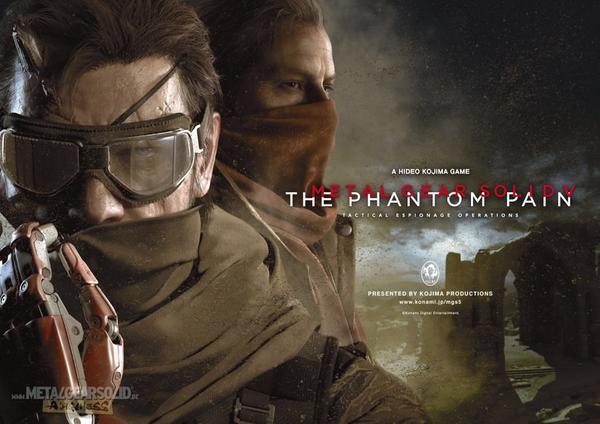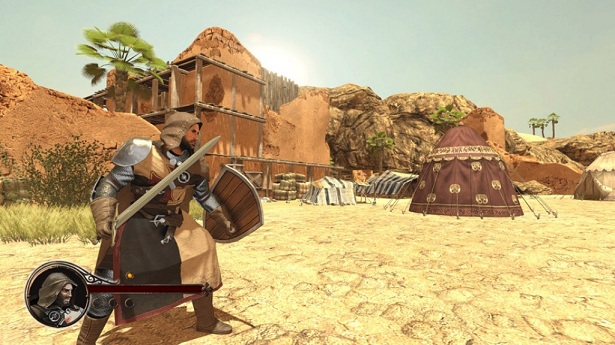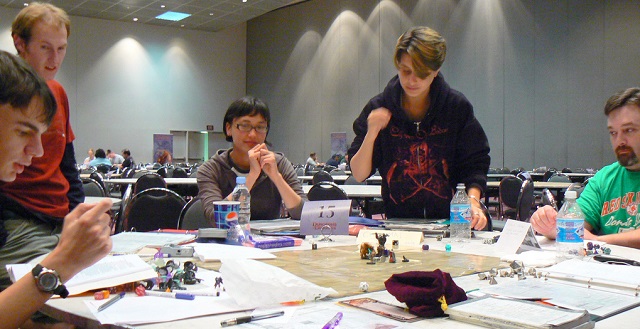


The human mind is a fascinating thing. At once it is both our greatest achievement, the supposed pinnacle of evolution, an organ powerful and clever, outsmarting, outwitting all the other creatures on this planet, and yet at the same time it’s a part of ourselves that can be fooled, tricked and hurt in the most peculiar of ways.
In this entry, we celebrate those games that are cerebral in not necessarily the nicest of ways. Games that show us things that aren’t there, the equivalent of M. C. Escher paintings, David Lynch movies, and cryptic messages uttered by a deranged transient on a subway train through the inner city late at night.
Those games are deceiving, they play games with us, with our minds, without asking for prior consent. Well, some do anyway. Others ease the player in and just go wild. In any case, these games are special. Delightful. Mostly. And deranged. A bit. But for some reason, they are still fun to be fooled by. The mind, well, it is a peculiar thing.
When it comes to games that deal with twisted symbolism, with games that confront the player with the strangest of situations and weird, unreal seeming sights and sounds, there’s few, very very few titles out there that can match or even come close to the strange, David Lynch inspired weirdness of Silent Hill 2. The main character at one point has to walk down an endless staircase. And jump into his own grave to proceed. They rarely come stranger than that.
While Silent Hill 3 is markedly different in the makeup and execution of the games it plays with the players mind, it’s still leaps and bounds above others. The main character’s sanity is repeatedly challenged. Is she really fighting monsters? Her own identity falls apart at a point. Who and what other characters are and want is rarely clear cut. Add to that the strong dose of symbolism and metaphor to create a perfect mindfuck storm.
This one is special. The game itself is the best title hands down inspired by works of H.P. Lovecraft there is. But what makes this game so special are the insanity mechanics. The characters will lose sanity when facing monsters, and at a certain point, things start to go wrong. The TV channel changes. Bugs crawl across the screen. The character’s head pops off. Which of course doesn’t really happen, but is a way of the game to express the character’s insanity.
A game that is so clearly been a labor of love by fans of Twin Peaks has a special place on the list. Just as Twin Peaks, this game with it’s strange take on small town America through a Japanese lense, presents weirdness at every corner. As do some of the game mechanics, deliberatly or not. Time speeds up when protagonist Francis York Morgan smokes cigarrettes. And then there’s the mix of weird animation, delivery of lines and overall weird to it that just, well, makes love to the mind.
Created by former Lucas Arts game design legend Tim Schafer, Psychonauts is a game that features the making of sweet, sweet love to the mind as the central device of its plot, as the main character sets out to infiltrate the minds of various other people at a summer/training camp for latent psychonauts, people with strong psychic abilities. So entering other people’s minds and screwing around in there, that’s what’s on the menu here. Oh and just overall great gameplay and storytelling. Which is to be expected with this big of a name attached.
Any game that offers a character that will eventually go insane cannot be a bad game. Amnesia’s protagonist has a constant conundrum. Being mortally afraid of the dark, being without a light makes him slowly go nuts. But being well illuminated means the game’s monsters will see him. Also, if he looks at the monsters, he will go nuts even faster. So the player will spend any time a monster is close in the dark, losing their mind, staring at the wall, listening intently for the creature to pass by. Which makes Amnesia one of the most intense games in existence.
Tumbling down the rabbit hole. Madness features quite prominently, both in Lewis Carrol’s books, and of course also in the quite deranged games based on them. American McGee’s version of Alice is like a much more malicious take on all the characters from the novels. Alice herself starts locked up in a lunatic asylum, and finds herself in a Wonderland that has been tainted and twisted and deranged by her own mental affliction. Of which she has to cure herself to save Wonderland.
Not only is Condemned a very violent game. It is also a game where the senses cannot always be trusted. People, things, shapes, appear and disappear. Walk through walls. Grotesque things lurk in the dark. Yes, that mannequin in the abandoned department store DID just move. Or did it? Condemned belongs in a very special niche of weird, urban horror, where the confines of reality in a modern American city are breaking apart. Things go bump in the dark. And more than that.
Taking inspiration from David Lynch’s more gruesome outings and from Silent Hill’s own interpretations of those, Jasper Byrne’s 2D take on the horror genre also applies a very liberal approach to what’s supposed to be real and what’s not. While the main character takes reality as granted, some things just aren’t right. Especially the dreams he has. And then there is the plague that turned everyone into flesh hungry mutants. And the people murdering each other.
This is a strange entry into the venerated Silent Hill series. A re-imagining of the very first Silent Hill, the game repeatedly has the player take various psychological tests, that in turn influence the behavior of characters, turns of events and even the shape and behavior of the monsters, turning the player’s own psyche against them, making it maybe not the most subtle, but without a doubt the most player centric mind probing game on this list.
Maybe not the most obvious candidate on the list. Unless, well, maybe this one is a bit much for people with a weak stomach. But for a game that consists of gruesome violence it is pretty clever, and it does have some rather interesting twists and turns along the way that certainly leave the some questionmarks on people’s faces. Oh and the soundtrack and the way it’s used in the game is truly mindbending.
Uhh. Yeah. This game is just completely, absolutely bonkers. Made by the same folks from Moscow who created PathoLogic, Cargo! tasks the player with restoring gravity to the world by creating things and kicking little dwarf guys through the air. It’s like an acid trip mixed with another acid trip mixed with a Rube Goldberg machine and some Alice in Wonderland thrown in for good measure.
Inspired by Alejandro Jodorowski’s comics, this colorful first person brawler with the personality only a mother could love stuns people with deliberate weirdness. The plot sounds like a fever induced dream, the look and feel of the game add to that impression, but underneath it all, there is a quite great little game that takes your brain and rides around the block on it for a few times while you go ahead and punch some... What are these things even. Monkeys? Men? In the face.
A hard game to properly classify. Catherine’s hero Vincent is torn between his girlfriend Katherine and the new girl in his life, Catherine. At night his being torn starts him getting stranger and ever more deadly nightmares where he almost turns into a sheep and has to evade certain doom. The latter part of which is actually the game, so that makes Catherine a... Puzzle platformer with adult and mind boggling subject matter. I guess.
Based on the short story written by and created with the assistance of Harlan Ellison, this classic point-and-click is a bit more than just a mere game, it is more like a piece of interactive, very, very malicious literature. There are five humans left on earth after a worldwide war, and those five are imprisoned by a mad supercomputer, who can alter them at will, made them immortal and tortures them for 109 years before the game begins. Fun stuff.




 5 Tips To Help You Get Started Casting eSports
5 Tips To Help You Get Started Casting eSports 20 PC Exclusives Releasing in 2011
20 PC Exclusives Releasing in 2011 Charli XCX reveals Japanese versions of Boom Clap and Break The Rules
Charli XCX reveals Japanese versions of Boom Clap and Break The Rules 3 Software-Related Legal Issues You Might Face One Day
3 Software-Related Legal Issues You Might Face One Day How To Find Awesome Gaming Conventions In Your Area
How To Find Awesome Gaming Conventions In Your Area